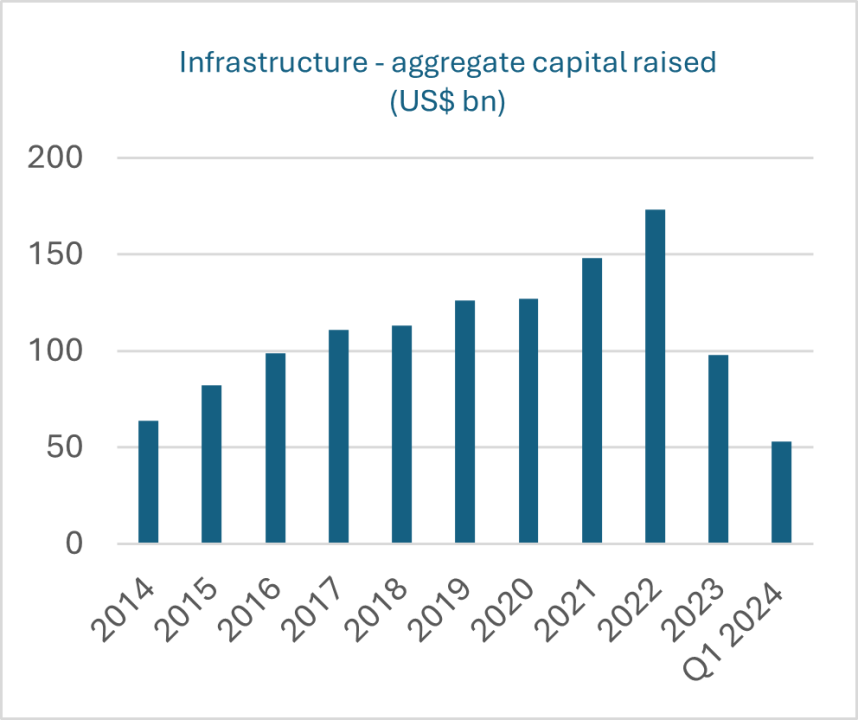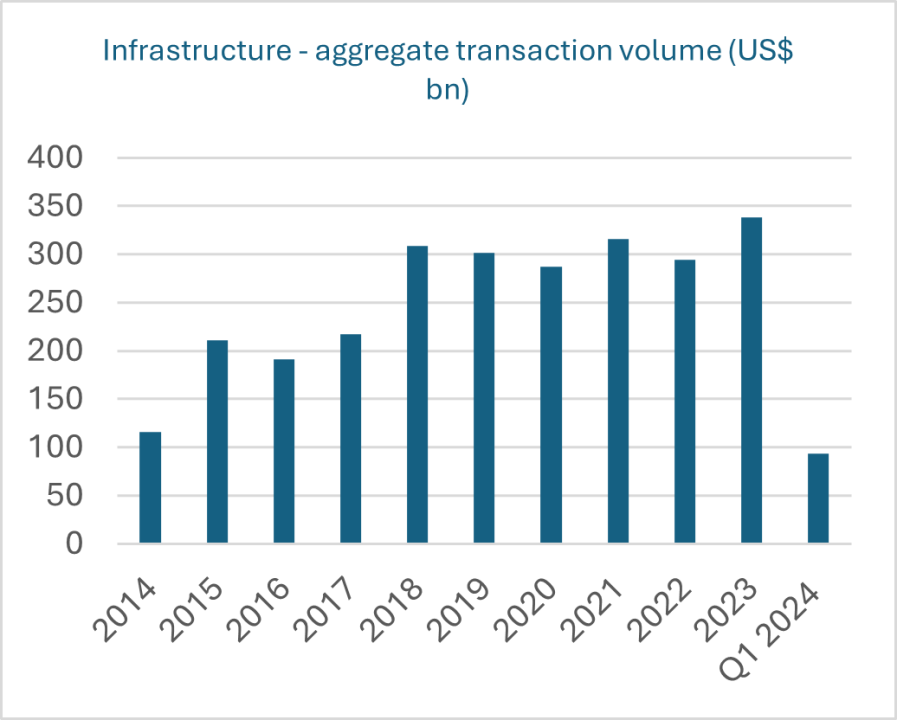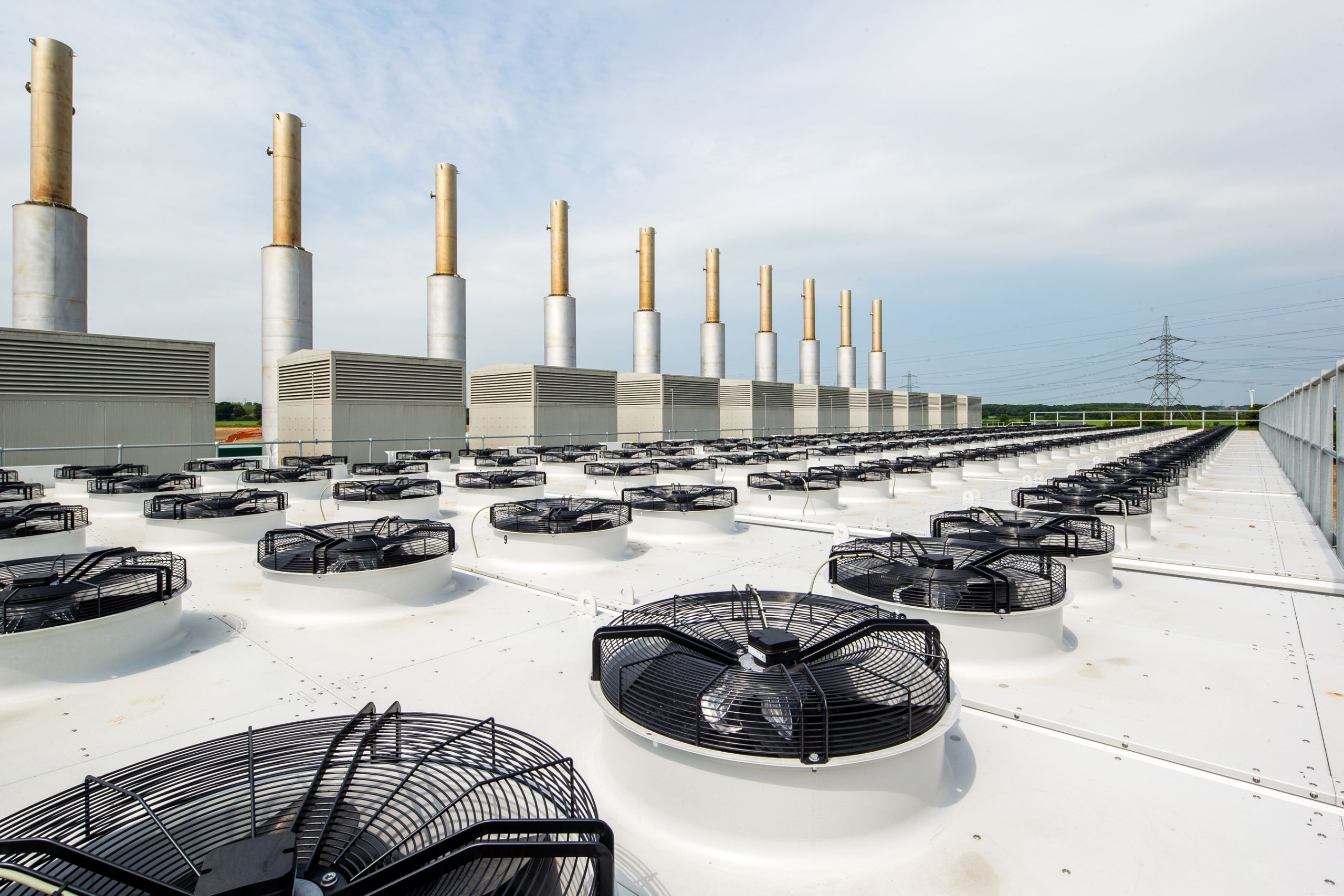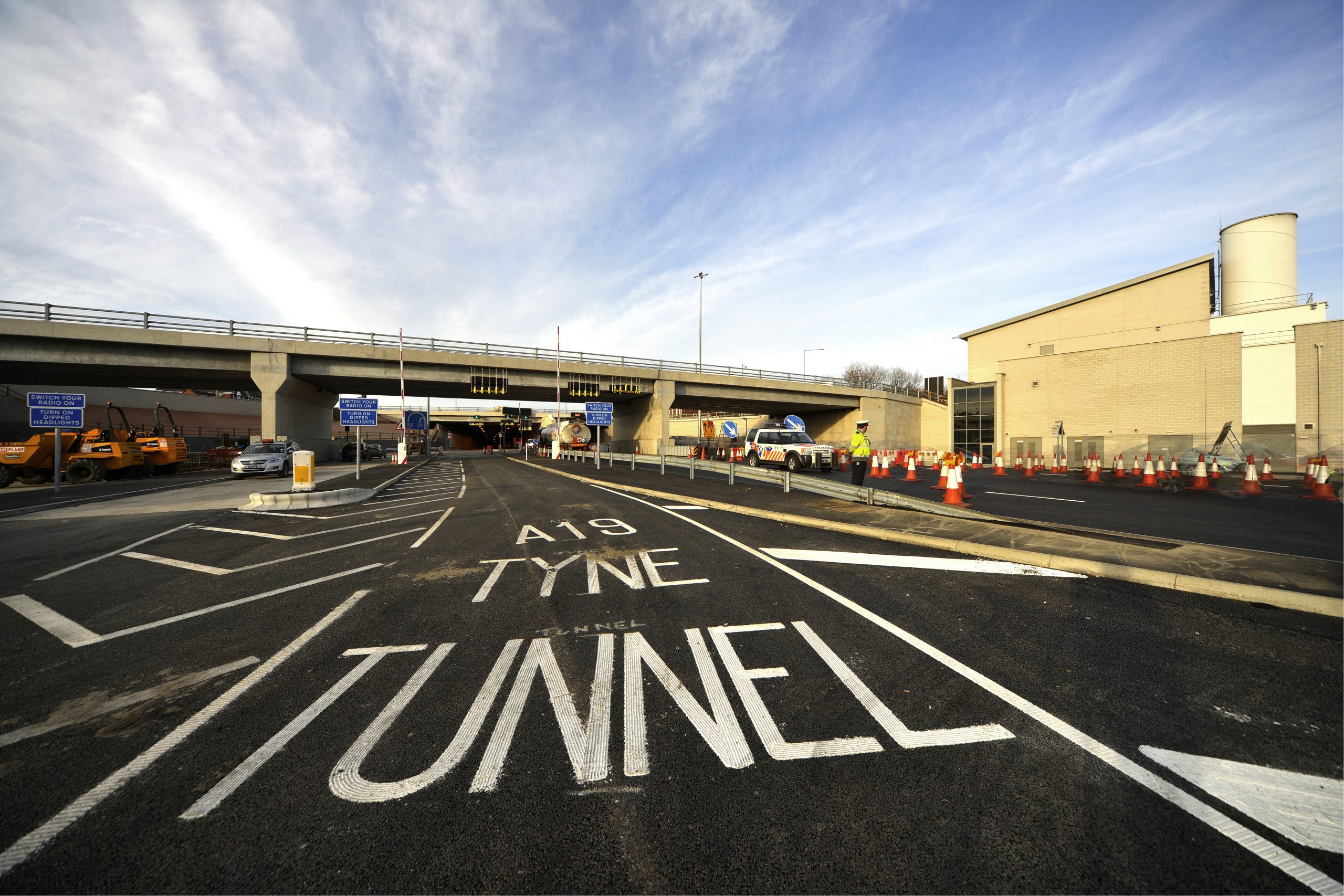Outlook
Monetary policy at an inflection point, as longer-term megatrends continue to shape this growing market
Rate pressures continue as near-term influences on infrastructure
The dominant short-term theme in infrastructure has been a degree of price adjustment and dislocation in the market, largely driven by the sharp increases in interest rates of the recent past. While there were some policy pivots in June 2024, with the central banks of Europe and Canada taking tentative steps toward rate easing, continued pressures from high rates in the United States and United Kingdom still have the capacity to affect asset valuations and deal flow. Having said that, infrastructure continued to prove resilient compared to other alternative asset classes, particularly with GDP-linked sectors such as energy and transport – supported by the resilient growth environment – and with digital infrastructure thriving as well amid an unprecedented acceleration in data demand driven by AI.
In terms of deals flow, higher rates led to a greater investor focus on value-add strategies over core. With investors already receiving higher income from traditional bonds amid elevated rates, interest in infrastructure has gravitated toward the higher end of the risk/ reward spectrum. Furthermore, the short-term uncertainty on policy has led to a widening in bid–ask spreads, with a discerning buy-side, placing a greater emphasis on testing asset prices, coupled with a sell-side less incentivized to put assets on the market. At the mid-year point of 2024, the volume of infrastructure transactions, particularly for core assets, had moderated somewhat when compared with recent years, with certain deal processes also taking longer as well.
Capital raises, transaction volumes moderating in early 2024


Source: Preqin, InfraLogic, as of June 2024. Aggregate transaction volume includes deals labeled as “Greenfield” and “M&A.”
However, it is important to note that the pricing environment for high quality assets continues to be strong, supporting transaction volumes. Similarly, after a very challenging past 18 months in terms of the fundraising environment, positive momentum can now be observed for established managers with a differentiated and proven investment proposition.
Global monetary policy at the crossroads
While high rates continue to be a potentially disruptive market force, we may also be at a possible inflection point in monetary policy. As previously mentioned, some central banks, such as the European Central Bank, have enacted rate cuts, and policymakers in the U.S. and U.K. have also signaled greater confidence that inflation is increasingly under control. This suggests that these two major economies could now be beyond peak interest rate levels and could possibly move to easing mode in the second half of 2024.
This could serve as a catalyst for infrastructure investment, as increased macroeconomic confidence could help move investment capital off the sidelines. We expect this to also provide stronger structural support to valuations in the sector.
Investing in “4-D” megatrends
The longer-term picture for infrastructure continues to be promising, in our view, with the capacity for growth driven by the “3-Ds” of thematic megatrends we have discussed in our previous outlook statements:
- Decarbonization – with continued efforts to decrease fossil fuel reliance and support electrification of heat and transport in addition to pushing for increased roll out of renewables
- Digitalization – including the expanded development of AI and the significance of cloud computing and other technological initiatives, boosting the volume of data and demand for digital infrastructure and data centers in particular.
- Demographic changes – with ageing populations in major developed economies and increased migration to urban areas reshaping infrastructure demand patterns and investment needs
We would note, however, the emerging importance of a “4th D” in the equation, that of “deglobalization,” with rising trade barriers leading to a reshuffle of supply chains and a reshoring of production capacity, and policy, such as the Inflation Reduction Act (IRA), aimed at stimulating investment in new infrastructure in the areas of clean energy, transportation and the environment to drive economic growth, job creation and a modernization of ageing infrastructure, which in many cases has been in decay for some time and is in urgent need of reinvestment. That these four megatrends continue to grow in importance, along with the capital outlays needed to fund them, means greater opportunities for infrastructure investors to participate in a long-term secular growth story. The opportunity set becomes more pronounced in the post-COVID era, in which government balance sheets have become strained due to increased public spending, which in turn opens the door wider for private investors.
Risks remain in the infrastructure space, from uncertainty around the growth outlook, to the possibility of greater geopolitical turmoil in the Middle East, Ukraine and other regions leading to increased market volatility and supply chain disruptions leading to construction delays and cost overruns for new infrastructure projects. However, given the pivotal role that the asset class plays for the energy transition and a widening investment gap, we anticipate continued support from policymakers and interest from investors in this rapidly evolving universe.
For further information or to speak to a member of the team, please fill out the form here.
Sources: Preqin, InfraLogic, 2024.
Authored by:
Jack Paris, Chief Executive Officer
Richard Crawford, Head of Energy Income Funds
Edward Hunt, Head of Core Income Funds
Stephane Kofman, Head of Capital Gain Funds



